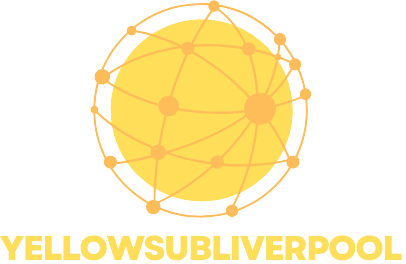Table of Contents
ToggleIn today’s fast-paced digital world, keeping up can feel like trying to catch a greased pig at a county fair. Enter digital adoption tools—the trusty sidekick every business needs. These nifty solutions help teams embrace new technologies without the usual headaches, ensuring everyone’s on the same page and not lost in the digital wilderness.
Overview of Digital Adoption Tools
Digital adoption tools facilitate the integration of new technologies within organizations. These tools simplify the process for teams, ensuring a smoother transition with minimal disruption.
Definition of Digital Adoption Tools
Digital adoption tools encompass software solutions designed to help organizations effectively implement and utilize new technologies. They offer features such as guided tutorials, in-app messaging, and analytics. Organizations leverage these tools to enhance user proficiency, streamline processes, and maximize software investments.
Importance of Digital Adoption in Modern Organizations
Digital adoption is essential for modern organizations facing rapid technological advancements. Effective digital adoption ensures employees remain engaged and productive while using new tools. It enhances collaboration, improves operational efficiency, and leads to better decision-making. Organizations that prioritize digital adoption can maintain competitive advantages in their respective industries. Enhanced user experience aids in reducing resistance to change, promoting a culture of innovation and adaptability.
Types of Digital Adoption Tools

Digital adoption tools come in various forms to support organizations in integrating new technologies effectively. Each type serves distinct needs, enabling smoother transitions and enhanced user engagement.
User Onboarding Tools
User onboarding tools guide new employees through unfamiliar software and platforms. These resources provide step-by-step tutorials and interactive walkthroughs, ensuring users understand key features quickly. For instance, platforms like WalkMe and Pendo offer in-app guidance that simplifies learning curves for teams. Organizations benefit from increased user retention and quicker acclimatization. Overall, onboarding tools enhance initial user experiences, making technology more accessible.
Training and Learning Management Systems
Training and learning management systems (LMS) deliver structured learning experiences. Companies utilize these platforms to create, manage, and distribute training content tailored to specific roles. Examples include platforms like TalentLMS and Moodle, which facilitate courses and assess user progress. Engaging training sessions improve skill acquisition, promote continuous learning, and enhance productivity. Implementing LMS ensures that personnel can adapt to evolving digital solutions with confidence.
Analytics and Feedback Tools
Analytics and feedback tools track user interactions and gather insights. They provide organizations with data on software usage, helping identify areas for improvement. Tools such as UserTesting and Hotjar enable real-time feedback collection, allowing teams to refine their digital adoption strategies. Analyzing user data enhances understanding of pain points and usage trends. Leveraging these insights fosters continuous improvement and supports informed decision-making within organizations.
Benefits of Using Digital Adoption Tools
Digital adoption tools offer significant advantages for organizations adapting to new technologies. They not only enhance user experiences but also improve overall efficiency.
Improved Employee Engagement
Digital adoption tools foster a sense of involvement among employees. Interactive features, like guided tutorials and in-app messaging, encourage users to explore new software confidently. Employees feel supported during the onboarding process, leading to higher satisfaction rates. Retention rates increase as users become proficient more quickly. Organizations that implement these tools often observe a noticeable boost in team morale and collaboration.
Enhanced Productivity
Boosting productivity ranks high among the benefits of digital adoption tools. These tools streamline workflows, allowing employees to focus on critical tasks rather than struggling with unfamiliar software. With features like contextual guidance, users receive real-time assistance when needed. Consequently, the learning curve associated with new applications shrinks. Teams can complete tasks faster and more accurately, leading to improved overall efficiency across the organization.
Reduced Training Costs
Digital adoption tools can lead to significant savings in training costs. Traditional training methods, which may require extensive time and resources, often prove inefficient. These tools offer self-service training options that allow employees to learn at their own pace. Organizations experience lower onboarding expenses by minimizing the need for in-person training sessions and materials. Analytical insights help identify knowledge gaps, allowing targeted training interventions, which further reduces costs associated with extensive training programs.
Best Practices for Implementing Digital Adoption Tools
Implementing digital adoption tools requires strategic planning and consideration of organizational dynamics. Understanding specific needs can significantly enhance outcomes.
Assessing Organizational Needs
Assessing organizational needs starts with identifying current challenges. Employees may face issues with specific software or workflows. Collecting feedback from teams helps pinpoint areas requiring support. Evaluating existing resources and capabilities is essential for a comprehensive analysis. Prioritizing goals enables organizations to tailor their digital adoption strategy effectively. This targeted approach ensures that the tools selected address relevant pain points and improve user experiences.
Choosing the Right Tool
Choosing the right tool involves comparing options based on functionality and user requirements. Identifying tools like WalkMe or Pendo focuses on user onboarding and guidance features. Prioritizing tools that align with organizational culture fosters higher acceptance rates among employees. Assessing scalability and integration capabilities also plays a crucial role in selection. Testing tools through trials or demos allows organizations to gain insights into their effectiveness. Ultimately, selecting the right tool empowers teams to adapt to new technologies seamlessly.
Continuous Evaluation and Feedback
Continuous evaluation and feedback ensure the long-term success of digital adoption initiatives. Gathering regular input from employees helps organizations understand the effectiveness of implemented tools. Conducting periodic assessments enables teams to identify areas needing improvement. Adapting strategies based on real-time analytics maximizes user engagement and productivity. Organizations committed to ongoing optimization can foster a culture of continuous improvement in digital adoption. Prioritizing these practices leads to sustained organizational growth and employee satisfaction.
Digital adoption tools are vital for organizations striving to thrive in a fast-paced technological landscape. By simplifying the integration of new technologies, these tools enhance user experiences and promote employee engagement. They not only streamline workflows but also contribute to improved productivity and reduced training costs.
Investing in the right digital adoption tools allows organizations to foster a culture of innovation and adaptability. As companies continue to navigate the complexities of digital transformation, prioritizing these solutions will ensure they remain competitive and responsive to evolving market demands. Embracing digital adoption tools is more than just a strategy; it’s a commitment to continuous improvement and sustained growth.







